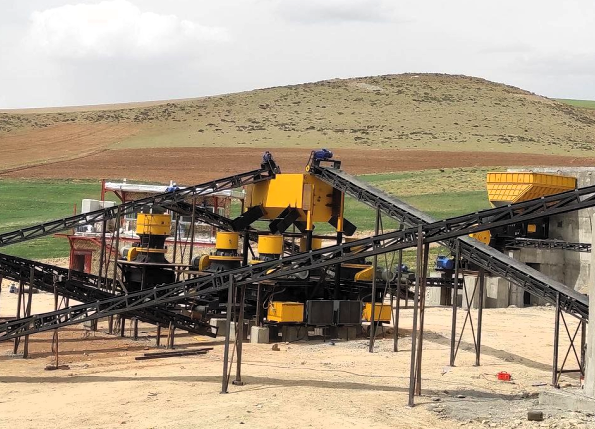Crushing Equipment: Types, Principles, and Applications
Release time: 2025-03-17
Crushing equipment plays a vital role in mining and construction, breaking down hard materials like rocks, ores, and concrete into smaller sizes. These machines use mechanical forces—such as impact, compression, or splitting—and can be stationary, mobile, or portable, depending on the job requirements.
Table of Contents
- Types of Crushing Equipment
- 1. Cone Crushers
- 2. Jaw Crushers
- 3. Centrifugal Crushers
- 4. Mobile and Portable Crushers
- 5. Sorting Devices in Crushing Lines
- Conclusion
Types of Crushing Equipment
Crushing equipment varies by design and function. Key types include:
- Jaw Crushers
- Cone Crushers
- Roll Crushers
- Impact Crushers
- Hammer Crushers
- Centrifugal Crushers

1. Cone Crushers
Cone crushers crush material by compressing it between a mantle and a rotating shaft. They excel at producing gravel and aggregates for mining and construction. Learn how to select the right crusher.
Key Features
They feature a fixed outer cone and a movable inner cone that oscillates, creating a crushing gap. This design ensures continuous operation and output.
Advantages
- Low operational noise
- Steady material discharge
- High-quality output
- Handles varying moisture levels
Disadvantages
- High energy use
- Heavy, needs a strong foundation
- Costly maintenance
2. Jaw Crushers
Jaw crushers are primary crushers for coarse crushing, using a fixed and a movable plate to break hard rocks. Discover how jaw crushers operate.

Key Features
The movable jaw oscillates via a motor-driven mechanism, crushing material against the fixed plate. They handle ores and sticky clays efficiently.
Advantages
- Simple, reliable design
- Easy to maintain
- Energy-efficient (0.3-1.1 kW-h/ton)
Disadvantages
- Not ideal for fibrous materials
- Vibration requires a stable base
- Needs consistent power
3. Centrifugal Crushers
Centrifugal crushers use high-speed centrifugal force to smash particles against impact plates, perfect for cubic gravel, sand, and ore crushing.
Key Features
Part of crushing and sorting complexes, they come in stationary or mobile forms, offering safety and low metal use.
4. Mobile and Portable Crushers
Mobile crushers process materials on-site, ideal for quarries and construction. Explore mobile crushing options.
Key Features
Available with electric, diesel, or hydraulic drives and crawler, skid, or wheeled chassis, they adapt to various terrains.
5. Sorting Devices in Crushing Lines
Crushing lines use screens, feeders, and conveyors to sort and move materials, ensuring consistent flow and precise fractions.
Comparison Table of Crusher Types
| Crusher Type | Principle | Main Use | Advantages | Disadvantages |
|---|---|---|---|---|
| Cone Crusher | Compression | Secondary Crushing | Low noise, steady output | High energy, heavy |
| Jaw Crusher | Compression | Primary Crushing | Simple, efficient | Vibration, power needs |
| Centrifugal Crusher | Impact | Fine Crushing | Safe, low metal use | Complex setup |
Conclusion
Selecting the right crusher depends on material type, output size, and site conditions. From jaw crushers for primary tasks to mobile units for flexibility, each serves a purpose.
provides top-tier crushing solutions for all industries. Get expert advice today.


